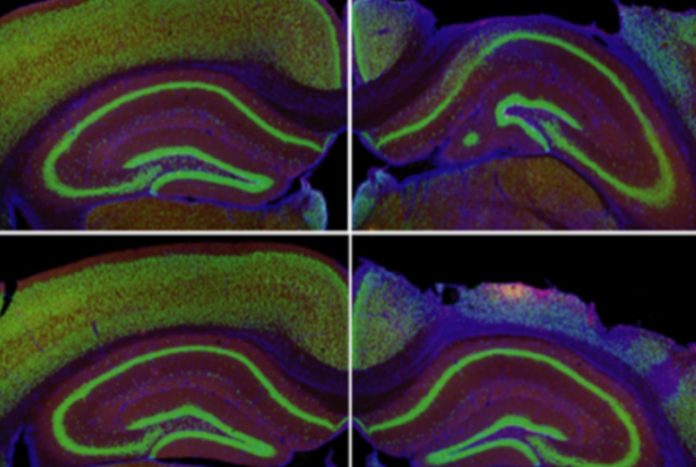Researchers from the Babraham Institute’s Immunology research group have published a therapeutic strategy for leveraging the body’s immune system to defend against brain injury.
Professor Adrian Liston (Babraham Institute) and Professor Matthew Holt (VIB and KU Leuven; i3S-University of Porto) collaborated to develop a targeted delivery system for increasing the number of specialized anti-inflammatory immune cells in the brain to reduce inflammation and damage.
Their brain-specific delivery approach prevented brain cell death after a stroke, a brain injury, and in a multiple sclerosis model. The findings were published in the journal Nature Immunology today.
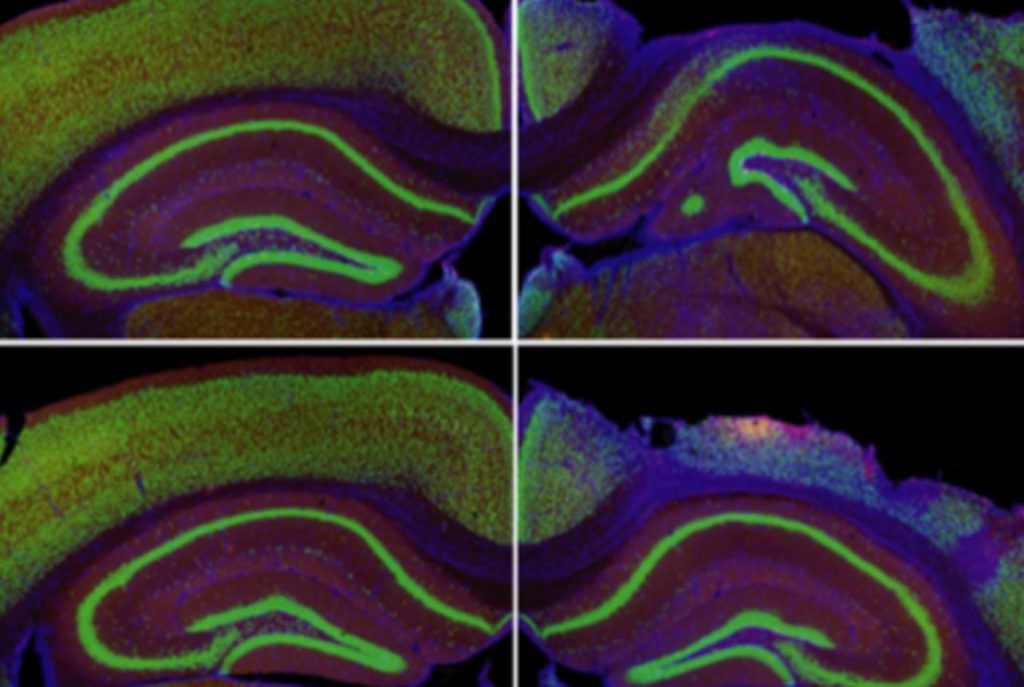
Traumatic brain injury, such as that caused by a vehicle accident or a fall, is a leading cause of mortality worldwide and can leave survivors with long-term cognitive impairment and dementia. The inflammatory response to the injury is a significant cause of cognitive impairment, with brain swelling causing lifelong damage. While inflammation can be treated in other regions of the body, it is difficult to do so in the brain due to the presence of the blood-brain barrier, which inhibits anti-inflammatory chemicals from reaching the trauma site.
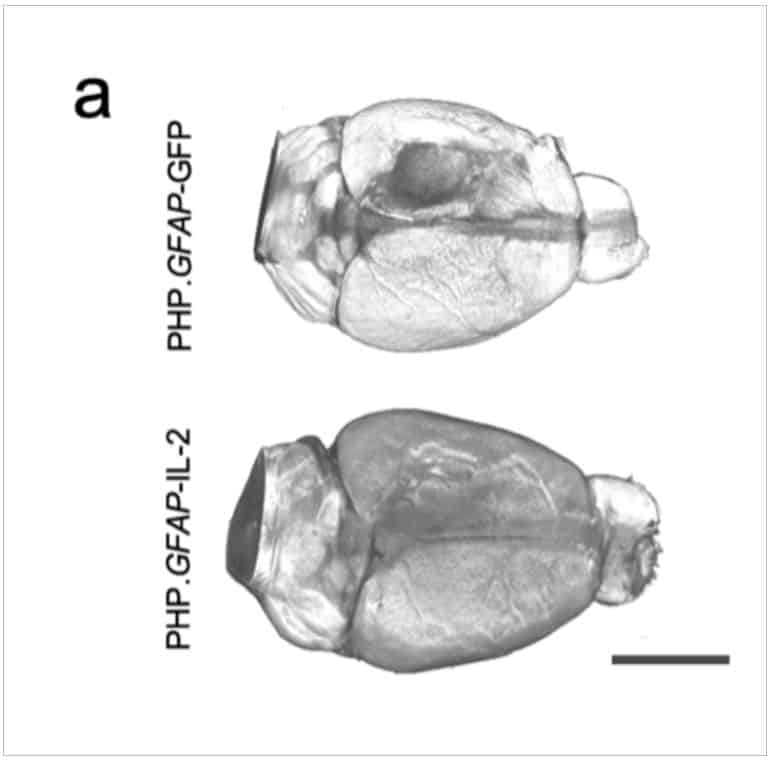
“Our bodies have their own anti-inflammatory response, regulatory T cells, which have the ability to sense inflammation and produce a cocktail of natural anti-inflammatories,” noted Prof. Liston, a senior group leader in the Babraham Institute’s Immunology program. “Unfortunately there are very few of these regulatory T cells in the brain, so they are overwhelmed by the inflammation following an injury. We sought to design a new therapeutic to boost the population of regulatory T cells in the brain, so that they could manage inflammation and reduce the damage caused by traumatic injury .”
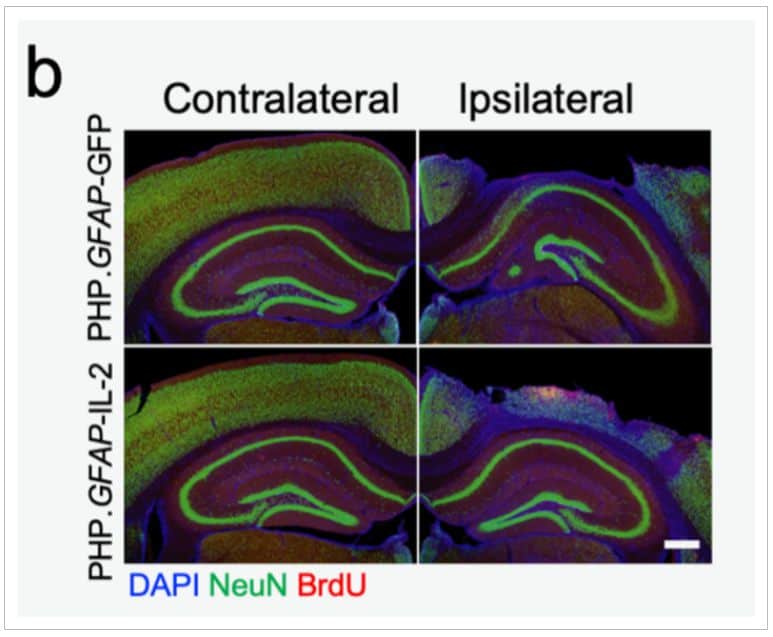
The research team discovered that the low number of regulatory T cells in the brain was due to a limited supply of interleukin 2, generally known as IL2. As it cannot cross the blood-brain barrier, IL2 levels in the brain are lower than in the rest of the body.
Together, the team came up with a new way to treat people that lets brain cells make more IL2. This gives regulatory T cells what they need to stay alive. The researchers used a ‘gene delivery’ approach based on an engineered adeno-associated viral vector (AAV), which can actually pass an intact blood-brain barrier and transfer the DNA required for the brain to create more IL2.
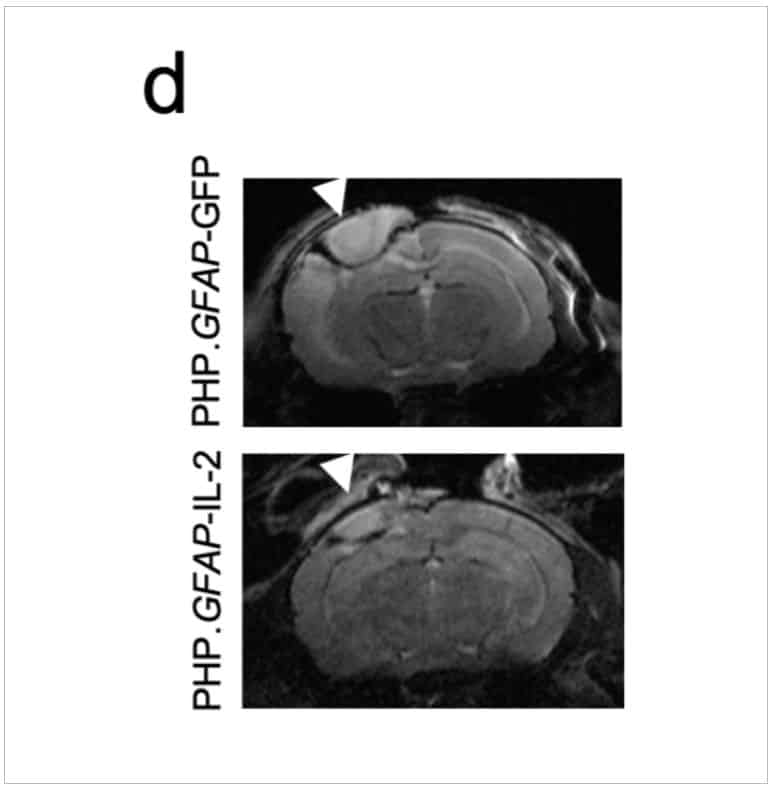
“For years, the blood-brain barrier has seemed like an insurmountable hurdle to the efficient delivery of biologics to the brain,” said Prof. Holt of VIB and KU Leuven. “Our work, using the latest in viral vector technology, proves that this is no longer the case; in fact, it is possible that under certain circumstances, the blood-brain barrier may actually prove to be therapeutically beneficial, serving to prevent ‘leak’ of therapeutics into the rest of the body .”
The new treatment developed by the research teams was able to raise levels of the survival molecule IL2 in the brain to levels comparable to those found in the blood. This resulted in a 10-fold increase in the number of regulatory T cells in the brain compared to normal. Mice were given carefully regulated head impacts and subsequently treated with the IL-2 gene delivery system to examine the treatment’s efficacy in a mouse model that closely matches traumatic brain injury incidents. The medication was found to be beneficial in minimizing the degree of brain damage caused by the injury, as measured by the loss of brain tissue and the mice’s ability to perform in cognitive tests.
“SSeeing the brains of the mice after the first experiment was a ‘eureka moment’ – we could immediately see that the treatment reduced the size of the injury lesion,” said lead author Dr Lidia Yshii, Associate Professor at KU Leuven.
The researchers also examined the effectiveness of the technique in experimental animal models of multiple sclerosis and stroke, recognizing the larger potential of a medication capable of reducing brain inflammation. In a multiple sclerosis model, treating mice during the early stages of the disease averted severe paralysis and helped the animals to recover more quickly. Mice given the IL2 gene delivery system after a major stroke were partially protected from secondary strokes two weeks later in a stroke model. In a subsequent study, which is currently awaiting peer review, the research team revealed that the therapy effectively prevented cognitive impairment in aged mice.
“By understanding and manipulating the immune response in the brain, we were able to develop a gene delivery system for IL2 as a potential treatment for neuroinflammation. With tens of millions of people affected every year, and few treatment options, this has real potential to help people in need. We hope that this system will soon enter clinical trials, essential to test whether the treatment also works in patients, ” Prof. Liston stated.
“There is an urgent clinical need to develop treatments which can prevent secondary injury that occurs after a traumatic brain injury,” commented Dr. Ed Needham, a neurocritical care consultant at Addenbrooke’s Hospital who was not involved in the study. “Importantly these treatments have to be safe for use in critically unwell patients who are at high risk of life-threatening infections. Current anti-inflammatory drugs act on the whole immune system, and may therefore increase patients’ susceptibility to such infections. The exciting progress in this study is that, not only can the treatment successfully reduce the brain damage caused by inflammation, but it can do so without affecting the rest of the body’s immune system, thereby preserving the natural defences needed to survive critical illness.”
Image Credit: Getty
You were reading: A New Therapeutic Approach Boosts Immunity After Brain Injury, Stroke
